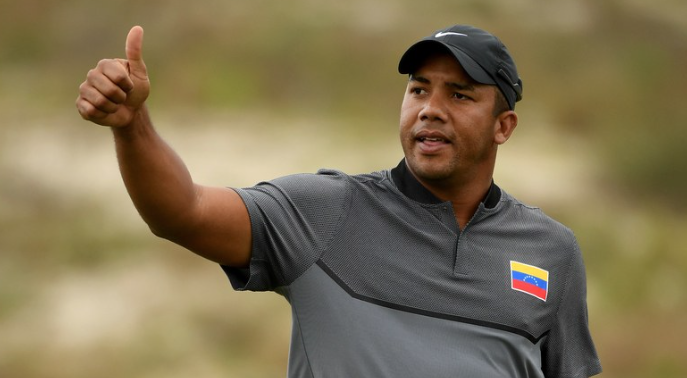By Joel Beall/Golf Digest
DESPITE its nightmarish pre-tournament narrative, the 2016 Olympic golf competition went as well as organisers could have hoped. The field seemed ingrained in the Summer Games experience, the Sunday leader board was littered with popular names and the tournament drew sold-out galleries. While the ultimate barometer of success will be the metabolism of golf in countries foreign to the game, the early returns on the Rio experience earned a thumbs-up review.
Which is not to say the tournament isn’t in need of tweaking. While golf’s long-term Olympic involvement will be decided in 2017, the sport will be a part of the Summer Games in Tokyo. Here are 8 changes we’d like to see for the 2020 Olympic golf tournament:

A decongested US PGA Tour schedule
One of the reasons why many of golf’s best passed on Brazil concerned the jammed PGA Tour calendar, accentuated by the British Open and PGA Championship separated by just nine days. Spreading the majors out not only lessens players’ mental load, but also subtracts an excuse for bowing out of the Summer Games. Our proposal:
– The US Open jumps to the second week of June, with the British Open ending the second weekend of July.
– The Olympics, which run from July 24th to August 9th, holds its men’s golf competition in the second week of the Games, with the women kicking off the proceedings in week one.
– The US PGA Championship goes to the last week of August
– The FedEx Cup begins in September, and we’re erasing the bye week between the BMW Championship and Tour Championship, instead giving the players a week’s rest between Atlanta and the Ryder Cup.

Bigger field
Before the mass withdrawal by golf’s preeminent figures became the overriding storyline, the Olympic tournament’s format drew the most criticism. As a refresher, here were the parameters that shaped the 2016 Olympic field: no more than four players in the top 15 from any one country can qualify; after the top 15, a maximum of two players can qualify per country; host country Brazil is guaranteed a spot.
This construction presents a few hurdles: chiefly, it limits the depth, even on the top level, of the entrants. For example, 13 of the top 22 players in the world are American, keeping talent like Brooks Koepka on the outside looking in. This issue is better illustrated on the women’s side, where South Korea accounts for half of the world’s top 30. Make no mistake, organizers emphatically want this tournament to be considered in a major light. To do that, it needs to get more of the top 30-40 players, no matter their country affiliation, involved.
That won’t come at the expense of others. Representatives from countries not often seen on golf’s biggest stages – think China, Mexico, Bangladesh – will still have a spot in the tournament. The entry of the top 30-40 players merely strengthens and deepens the field. The augments the Olympic field from 60 players – about 40 per cent the size of a normal US PGA Tour event – to the 80-90 range, instantly adding credibility and viability to the tournament.

Age limit
Admittedly, this will likely receive the biggest pushback. However, other sports – most notably, basketball – are considering putting age restrictions on Olympic athletes. The age ceiling is not intended to discriminate: as Henrik Stenson, Justin Rose and Marcus Fraser proved, the old guys can pack a punch. Rather, the idea is to use the international dais to highlight young guns and fledgling talent that’s projected to be a factor in the sport for years to come. No offense to Stenson, who’s the hottest player in golf the past five weeks, but he does have a sooner-rather-than-later expiration date.
Youth won’t necessarily equate to a better show; in the same vein, it’s an easier sell to casual or fringe fans. While that marketing spiel might be tough to swallow, it’s a very real reality golf, and all athletics, have to face.

Team format
This addition seems to be universally desired across the media and fan landscape, and rightfully so. A major complaint heading into Rio was that the Olympic format didn’t differ from the usual play see on the top world tours. As team competitions are a rarity in golf, implementing this facet adds a uniqueness to the event, fueling the desire to tune in.
Conversely, the Rose-Stenson showdown illustrated the benefits of stroke play. Bringing in a team component doesn’t have to come to the detriment of the individual competition. Similar to college golf, the Olympics can hold a concurrent aggregate total to determine a team winner.
However, this does warrant a caveat. Mentioned above, we want the top 30 or 40 players, no matter their country of origin. But it would be unfair if the team event solely factors the top two scores from a country. The US and Great Britain, with dozens of representatives, would be at a huge advantage.
In order to make sure one or two nations don’t dwarf the tournament, each country can only select four individuals whose scores will account for the team total, with the best two counted. Using our Koepka example from above, that means he could play as an individual, but, theoretically, his score would not go towards the United States’ total, even if his score was the best of the bunch. Some of the bigger nations would likely protest, but some form of level playing field needs to be enacted, and this achieves that ideal. And aside from South Africa and Australia, very few countries would have four players in the field, so the US and Great Britain would still be rewarded for their depth.

Bring back the Olympic trophy
You’ve seen the hardware they handed out in 1904, right? Besides, an Olympic medal is inimitable, but you can’t drink out of it.

Step up the uniforms
The garb from Great Britain received its share of snickers on social media, yet give them credit: At least the clothes were original and specifically designed for the Olympics. Some players – most notably Jhonattan Vegas & Thornbjorn Olsen — were wearing their usual wardrobe, with their respective country’s flag haphazardly plastered on the chest. The plain hats Stenson flaunted for Sweden weren’t much better. Other Olympic sports don’t have such fashion hiccups.
Yes, asking for better style seems like a ridiculous complaint. However, if golf wants to be taken seriously in the Summer Games, it better dress the part.

Double-up the Ryder Cup and OWGR points
As Alex Myers pointed out, players got more Ryder Cup and OWGR credit competing in the Travelers Championship than in the Olympics. That’s all kinds of wrong. Moreover, if a player from Europe or the US medals, that achievement should go ways in building their Ryder Cup case (Matt Kuchar). Perhaps allotting the same point system as a major is brash, but giving the Olympics the same gravitas as a WGC event is a reasonable request.
Make it a week-long event with ancillary competitions
Along with the team battles, sprinkle in contests for accuracy, long drive, short-game, hell even putt-putt. Judging by the TV schedule and confirmed by Wikipedia, swimming has 85 official events. (No wonder Michael Phelps has so many medals.) Why does golf have to be limited to just one competition? And if that sounds outlandish, some of these contests were part of the golf schedule in the 1904 Summer Games.
After all, one of the primary impetuses for participating in the Olympics is to grow the game. What better way to spread the sport than a week-long celebration on a global stage, one that includes not only fierce competition, but fun.



